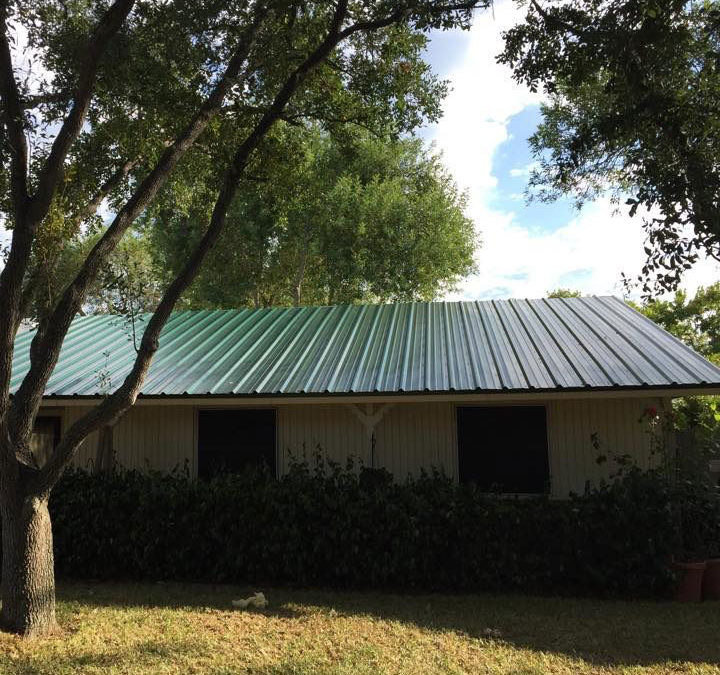Your roof plays a significant role in determining your home’s energy efficiency, impacting how much heat is absorbed or reflected and, ultimately, your utility bills. Choosing the right roofing material can help regulate your home’s temperature, reduce the strain on your heating and cooling systems, and lower your energy costs. Whether you’re building a new home or replacing an old roof, selecting energy-efficient roofing materials is an excellent way to invest in both the environment and long-term savings.
In this blog, we’ll explore some of the best roofing materials for energy efficiency, how they work, and the benefits they can provide for your home.
1. What Makes a Roofing Material Energy Efficient?
Before diving into the different types of roofing materials, it’s important to understand what makes a roof energy efficient. Here are the key factors to consider:
Reflectivity: A roof’s ability to reflect sunlight, rather than absorb it, reduces the amount of heat that enters your home. This is especially important in hot climates, where cooling costs can skyrocket.
Emissivity: This refers to how quickly a material releases the heat it has absorbed. High emissivity means the material doesn’t hold onto heat for long, keeping your home cooler.
Insulation Properties: Some roofing materials provide better insulation, preventing heat transfer between your home and the outside environment. This helps maintain a stable indoor temperature, reducing the need for excessive heating or cooling.
2. Best Roofing Materials for Energy Efficiency
Now that we’ve covered the basics of energy efficiency, let’s take a look at some of the most energy-efficient roofing materials on the market.
1. Cool Roofs
Cool roofs are specifically designed to reflect more sunlight and absorb less heat than standard roofs. They can be made from a variety of materials, such as asphalt shingles, metal, tiles, or single-ply membranes, and are coated with reflective pigments that enhance their energy efficiency.
Benefits:
– Reflects up to 65% of solar heat.
– Reduces roof surface temperature by up to 50°F.
– Lowers cooling costs in hot climates.
Best For: Homes in hot or sunny climates where cooling costs are a major concern.
2. Metal Roofing
Metal roofing is one of the most energy-efficient roofing materials available, thanks to its natural reflectivity and ability to shed heat quickly. Metal roofs are also long-lasting, durable, and can be installed with cool roof coatings to further enhance energy efficiency.
Benefits:
– Reflects solar radiant heat, reducing cooling costs by up to 25%.
– Available in a variety of colors, including light and reflective shades that increase energy efficiency.
– Durable, with a lifespan of 40–70 years.
– Lightweight and recyclable.
Best For: Hot climates and homeowners looking for long-lasting, sustainable roofing materials.
3. Clay and Concrete Tiles
Clay and concrete tiles are excellent choices for energy-efficient roofing, particularly in hot climates. These materials have natural insulating properties and, when installed properly, create a thermal barrier that helps regulate indoor temperatures. Their shape also allows for better airflow between the tiles and the roof deck, which helps keep the home cooler.
Benefits:
– Reflective and insulating properties reduce heat absorption.
– Long lifespan (50–100 years).
– Suitable for warm climates, especially Mediterranean and Southwestern architectural styles.
– Resistant to fire, rot, and insect damage.
Best For: Homes in hot, sunny areas and homeowners seeking a durable, stylish, and energy-efficient roof.
4. Asphalt Shingles with Reflective Coatings
Asphalt shingles** are one of the most popular roofing materials due to their affordability and ease of installation. While traditional asphalt shingles absorb a lot of heat, manufacturers now offer cool roof asphalt shingles that are coated with reflective granules to improve energy efficiency.
Benefits:
– Affordable and widely available.
– Reflective coatings can reduce cooling costs by reflecting more sunlight.
– Available in a variety of styles and colors.
Best For: Homeowners looking for an affordable, energy-efficient roofing solution that doesn’t compromise on aesthetics.
5. Slate Roofing
Slate roofing is a high-end, natural stone material known for its beauty, durability, and energy efficiency. While slate can be an expensive roofing option, it provides excellent insulation and reflects heat well, making it a great choice for energy savings.
Benefits:
– Extremely long lifespan (75–150 years).
– Natural insulator, helping to maintain a stable indoor temperature.
– Reflects sunlight effectively, keeping your home cool in summer.
– Environmentally friendly, as it’s made from natural stone and can be recycled.
Best For: Homeowners seeking a premium, energy-efficient roofing option that offers timeless beauty and long-term savings.
6. Green Roofs (Living Roofs)
Green roofs or living roofs are covered with vegetation and provide a natural way to enhance your home’s energy efficiency. These roofs create an insulating layer that helps regulate indoor temperatures, reduce heat absorption, and even improve air quality. Green roofs are most effective in urban environments, where they can also reduce the heat island effect.
Benefits:
– Excellent insulation properties.
– Reduces heat absorption and lowers energy costs.
– Helps manage stormwater runoff and improves local air quality.
– Enhances the aesthetic appeal and eco-friendliness of your home.
Best For: Eco-conscious homeowners looking to reduce energy costs and minimize their environmental impact.
3. Energy-Efficient Roofing in Different Climates
Choosing the right energy-efficient roofing material depends largely on your local climate. Here’s how different materials perform in various environments:
Hot Climates: In regions with intense heat and long summers, opt for roofing materials that reflect heat and keep your home cool, such as cool roofs, metal roofing, or clay tiles. Lighter colors are particularly effective at reflecting sunlight and minimizing heat absorption.
Cold Climates: In colder climates, materials that offer better insulation, like slate or asphalt shingles, can help retain heat and reduce heating costs. While energy efficiency is still important, heat retention may be a higher priority than reflectivity.
Mixed Climates: In areas with both hot summers and cold winters, look for versatile materials like metal or reflective asphalt shingles. Cool roofs can also be a great option, as they reduce heat absorption in the summer and prevent excessive heat loss in the winter.
4. Maximizing Energy Efficiency with Proper Installation
Even the most energy-efficient roofing material won’t perform optimally without proper installation. Here are some factors to consider during the installation process:
Roof Ventilation: Proper attic ventilation is essential for maintaining energy efficiency. A well-ventilated attic allows heat to escape in the summer, preventing your roof from becoming too hot, and helps regulate moisture levels in the winter to avoid condensation and mold growth.
Insulation: High-quality insulation under your roof helps reduce heat transfer between your home’s interior and the outside environment. This improves energy efficiency and keeps your home comfortable year-round.
Roof Pitch and Orientation: The pitch and orientation of your roof can affect how much sunlight it absorbs. A steeper roof will absorb less heat, while a roof facing south or west will receive more direct sunlight. Consider these factors when selecting a roofing material for optimal energy savings.
5. Energy-Efficient Roofing: Long-Term Savings and Environmental Impact
Investing in an energy-efficient roof not only reduces your utility bills but also has long-term financial and environmental benefits:
Lower Energy Bills: By reducing heat absorption and improving insulation, energy-efficient roofs can significantly reduce your heating and cooling costs, leading to substantial long-term savings.
Increased Property Value: Homes with energy-efficient features, including roofing, are more attractive to buyers and can command higher resale values.
Environmental Benefits: Energy-efficient roofs help reduce your home’s overall energy consumption, which lowers greenhouse gas emissions and decreases your environmental footprint.
Conclusion
When it comes to energy efficiency, the type of roofing material you choose can make a big difference in your home’s comfort and utility bills. Cool roofs, metal roofing, clay and concrete tiles, and reflective asphalt shingles are some of the best options for reducing heat absorption and lowering energy costs. By selecting the right material for your climate and ensuring proper installation, you can enjoy a more energy-efficient home and long-term savings on your utility bills.
If you’re considering upgrading your roof to improve energy efficiency, consult with a roofing professional to determine the best materials and installation techniques for your home’s specific needs. Investing in energy-efficient roofing is not only good for your wallet, but it’s also a smart way to reduce your home’s environmental impact.
Contact Us
Texas Coastal Roofing and Construction can help you maintain your roof’s excellent condition. We offer a variety of services. Call us today at (361) 332-1263to learn more. We serve the Corpus Christi coastal bay area including Portland, Rockport, Port Aransas, McAllen, North Padre Island, Kingsville, Mathis and more!


Recent Comments